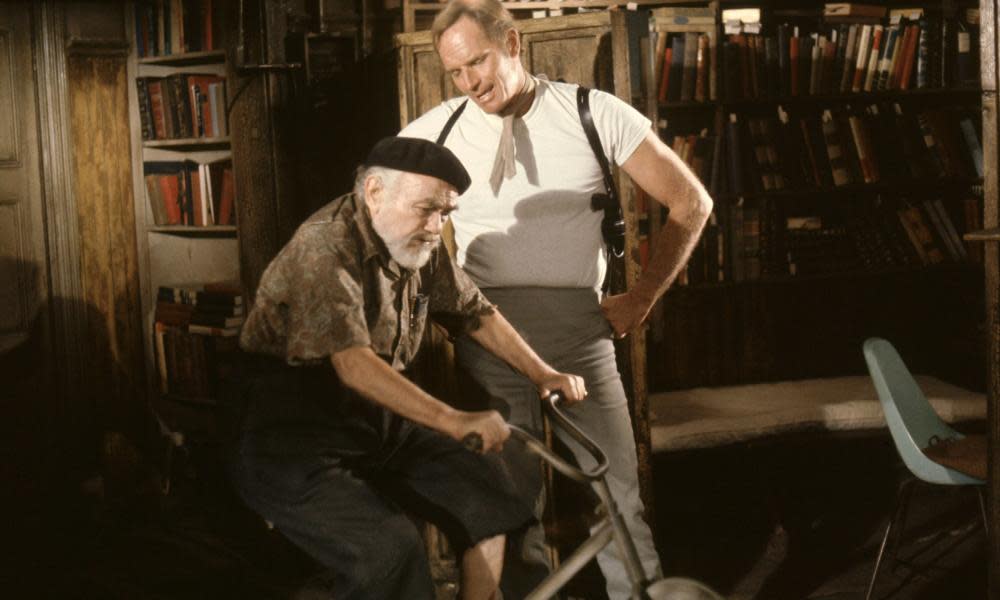Make Room! Make Room! versus Soylent Green: can film trump book?

I’ve just taken advantage of my time in isolation to watch Richard Fleischer’s 1973 sci-fi classic Soylent Green. My firm conclusion is that it is (even) better than the book on which it is based, Make Room! Make Room!
Related: Make Room! Make Room! is a revelatory novel to read right now
But before I go into that, I suppose I should acknowledge the argument that comparing novels to their film adaptations is unreasonable. They are different art forms. The experience of spending 20-odd hours reading David Copperfield spread out over weeks or even months is necessarily different from watching the recent Armando Iannucci film, although I’m mighty glad that they both exist because they’ve both given me a lot of joy.
Yet while these comparisons may be invidious, that doesn’t mean they can’t be fun. And let’s face it. No one beats Charles Dickens. Dev Patel is wonderful in the new film. The script is fantastic. Everything looks great. I laughed and laughed when I was watching it. I was also swept up in the emotion. I loved every minute. But! David Copperfield the novel is 600 pages of inimitable genius. And that’s that.
And even without Charles Dickens at the controls, novels generally have the advantage. There are no limits on their special effects budgets. They have more time and space to work through their ideas, immerse you in their worlds and involve you in their stories …
You know all that. These aren’t ground-breaking ideas. But no harm in thinking about them now. Most of us have a bit of extra time on our hands, after all. These arguments are also worth rehearsing to help make the point about just how good Soylent Green is. It’s easily better than Make Room! Make Room! - and that isn’t necessarily a criticism of Harry Harrison.
Related: Make Room! Make Room! is our reading group book for March
Harrison’s novel has a few faults. Its drifting, unfocused ending doesn’t deliver on the future-noir opening and its promise of a gripping detective story. And there’s quite a bit of preaching about contraception and overpopulation to wade through. But it’s still an effective portrayal of a messed-up world, and Harrison definitely deserves credit for some of the most effective moments and ideas in Soylent Green. After the picture came out, Harrison joked that it “at times bore a faint resemblance to the book”, but actually his fingerprints are all over it. Richard Fleischer’s grungy, over-crowded New York with its disgruntled queues at water-pumps and violent food riots are instantly recognisable from the book. So too is the cramped apartment where the ageing hero Sol (played in the film by Edward G Robinson in his 101st and final screen appearance) pedals furiously on his adapted exercise bike to provide power for himself and his roommate, Charlton Heston’s hard-bitten cop Robert Thorn.
Just as in the book, this friendship forms the emotional heart of the film – but under Fleischer’s direction, and with such good actors, it takes on new resonance. In the novel, Sol takes to making hectoring speeches about contraception. In the film (and now we’re getting on to the serious spoilers) Robinson says far more with measured silences and misty eyes. In Sol’s final moments, he delivers what must be one of the finest performances from an actor lying motionless on his back in cinema history, quietly weeping as images of the lost beauties of nature are beamed in front of him. It’s a moving scene even before you realise that Robinson had received a terminal cancer diagnosis before he went on set (he didn’t tell anyone) and from what depths those tears must have come.
Then we come to the major difference between the film and the book: the big reveal that poor old Sol’s corpse is going to be transported to a processing plant. Even though I was already quite aware that Soylent Green is people, I was still surprised by the power of the dialogue-free minutes where Thorn makes his discoveries.
Harrison himself admitted that the film had a far better dramatic arc than his book, even if he also complained that turning starving people into food was inefficient because they’d never provide enough meat. For myself, I was gripped. I’d never completely sunk into the book and it merged all too uncomfortably with the news coming in about coronavirus. The film took me somewhere else. For that alone, I’d be grateful. When you also factor in the catharsis of seeing Edward G Robinson’s last great performance it starts to feel like something well worth the time. Which feels lucky right now …

 Yahoo News
Yahoo News 
